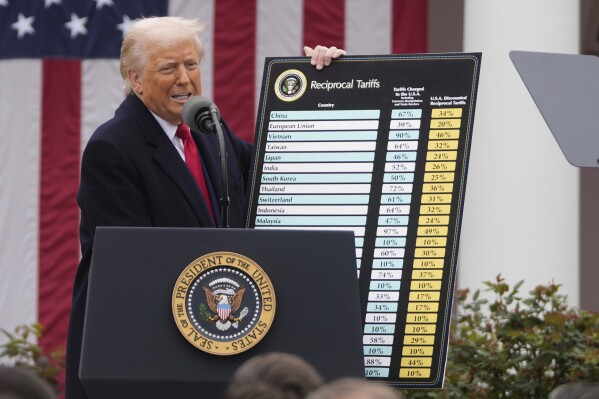In today’s fast-changing business world, organizations cannot rely solely on traditional proposal templates and internal messaging. To truly stand out, companies need market led proposals—strategically crafted documents that reflect current market trends, customer behaviours, and competitive dynamics. These proposals go beyond showcasing past performance; they demonstrate foresight, relevance and adaptability.
What Are Market-Led Proposals?
A market-led proposal is a formal document submitted to secure business (whether a bid, tender, grant application, or contract offer) that is shaped not only by the offering company’s capabilities, but by a deep understanding of the external market environment—customer pain points, competitor positioning, regulations, technology shifts, economic factors and emergent opportunities. It is “led” by the market, not just by internal organisation.
Key attributes of market-led proposals:
- Customer-oriented language that addresses real needs.
- Evidence of market insight: Data, case studies, trends.
- Clear linkage between market demand and your solution.
- Differentiation based on market intelligence.
- Agile response to change rather than static planning.
When you submit a market-driven proposal, evaluators see that you’ve done your homework and understand both the problem landscape and how your solution fits into it.
Why Market-Led Proposals Matter More Than Ever
Several market changes make this approach critical:
1. Increased Competition
Digital platforms and global sourcing mean more bidders for every opportunity. To win, a proposal must immediately resonate with what the evaluator cares about—market relevance gives you an edge.
2. Rapid Technology Shifts
Whether it’s AI, sustainability, or supply-chain disruption, markets are evolving fast. A proposal tied to yesterday’s model will look stale. Market-led proposals show that you get what’s changing and can adapt.
3. Customer Expectations
Buyers expect partners who anticipate their needs—not just fulfil them. A proposal that sounds “we’ll-deliver-what-you-wrote” lacks impact. A market-led one says: “Here’s where your marketplace is going—and here’s how I help you lead it.”
4. Regulatory and Sustainability Pressures
Governments, corporates, and NGOs increasingly prioritise sustainability, diversity, resilience. Proposals that mention these as after-thoughts won’t stand out. Market-led proposals integrate these themes proactively.
5. Value Over Price
When everyone can meet minimum requirements, differentiation shifts to value. Market-led proposals emphasise value in market terms: speed to market, innovation, risk mitigation, customer acquisition.
Steps to Build a Market-Led Proposal
Here is a structured approach:
Step 1: Conduct Market Intelligence
Start by assembling relevant market data: industry reports, digital research, competitor analysis, buyer interviews, trend forecasts. Ask questions such as:
- What pain points are increasing in the market?
- Which solutions are gaining traction?
- Where are budgets shifting?
- What are emerging regulatory or technology drivers?
Step 2: Link Your Solution to the Market Need
Once you understand the market, map your strengths to those needs. Clearly articulate how your approach addresses the market demand you identified. Use data and real-world examples.
Step 3: Craft a Compelling Problem Statement
Begin your proposal with a problem statement grounded in market reality. For example: “With 28% year-on-year growth in remote site deployments, clients face a 40% increase in latency issues…” This shows relevance right away.
Step 4: Define Clear Outcomes and Benefits
Translate features into market-led benefits. Instead of saying “we will implement X,” say “our solution reduces your customer churn by Y% within 12 months because we address the new remote-user surge.”
Step 5: Provide Evidence and Validation
Bring in case studies, customer references, success metrics, pilots, benchmarks—all that show you have delivered in the market context you describe.
Step 6: Show Competitive Differentiation
Use your competitive intelligence to highlight what sets you apart. Avoid vague claims. Use statements like “unlike competitor Z, our offering integrates real-time AI detection and has demonstrated time-to-value of six weeks.”
Step 7: Demonstrate Agility and Future Readiness
Markets move fast. Highlight how your solution adapts to future trends: “As 5G slices become mainstream, our modular platform ensures your deployment can scale with minimal re-engineering.”
Step 8: Include Risk Mitigation and Sustainability
Buyers appreciate vendors who consider risk and broader impacts. Auto mention compliance, supply-chain resilience, and sustainability credentials if relevant. This reinforces a market-leading lens.
Step 9: Use Clear, Market-Focused Language
Avoid internal-centric jargon (“we have robust internal methodology”). Speak in the buyer’s world: “In 2025 the demand for micro-fulfilment will double; our solution positions you to lead this opportunity.”
Step 10: Provide a Roadmap and Metrics
Outline how you will deliver in phases, how you measure success, and what impact the buyer can expect. Use numbers geared to the market effect: revenue uplift, cost avoidance, time to value.
Common Mistakes to Avoid in Market-Led Proposals
- Over-emphasis on Company Heritage
Buyers care about what you can do now and in future—not just your 30-year history. - Generic Benefits
Phrases like “increase efficiency” are weak. Link to market context: “reduce time to market by 30%.” - Ignoring Market Shifts
If your proposal fails to reference current trends, it signals you may be out of touch. - Too Much Technical Detail, Too Little Impact
Data matters—but translate it into market consequence. “We use microservices” versus “Our microservices enable you to deploy new features every week, keeping you ahead of competitors.” - Underestimating Competitors
Even better proposals anticipate competitor responses and explain how you perform in that competitive landscape. - Neglecting Buyer Challenges Beyond Your Offering
Your buyer may face budget constraints, regulatory changes, legacy systems. A strong proposal acknowledges and addresses these.
Tips for Optimising Market-Led Proposals for SEO (When Publishing Online)
If your proposal content is shared online—on corporate blogs, thought leadership pages, or guest posts—use these SEO best practices:
- Use keywords like “market-led proposals,” “proposal strategy,” “market-driven proposals,” “business proposal market alignment” naturally throughout.
- Include long-tail variants: how to write a market-led proposal, benefits of market-driven bidding, proposal trends 2025.
- Use subheadings (H2/H3) for readability.
- Internal link to relevant posts: e.g., why proposal strategy matters, market research in proposals.
- Add external links to reputable sources: industry reports, trend data.
- Use images or infographics showing proposal workflows or market data (with alt text such as “market led proposal diagram”).
- Finish with a call-to-action if appropriate: Download our proposal toolkit, Read our full whitepaper.
Measuring Success of Market-Led Proposals
Once published or submitted, how do you know your market-led proposal is working?
Metrics to track:
- Proposal win rate (%) compared to previous baseline
- Time to contract signature (speed)
- Feedback from buyer evaluators referencing market relevance
- Post-award client satisfaction on defined metrics (value delivered)
- ROI: budget compared to benefit realization
If you see improvements in these areas, you know your shift toward market-driven proposal strategy is paying off.
Conclusion
In the landscape of rising competition, fast-moving markets and evolving customer expectations, traditional internal-centred proposals no longer suffice. Businesses must step into the buyer’s world, align their offering with market dynamics, and craft market-led proposals that resonate with evaluators, demonstrate urgency, and deliver measurable impact.
By following market intelligence, translating insights into clear benefits, differentiating competitively, and presenting your solution as future-ready, you make your proposal more than just a document—it becomes a strategic conversation.
As you apply these principles, remember: the market doesn’t wait. By leading the market rather than following it, your proposals stand a far stronger chance of winning. Write with empathy for the buyer, speak the language of the market, and consistently measure your proposal strategy’s success.







